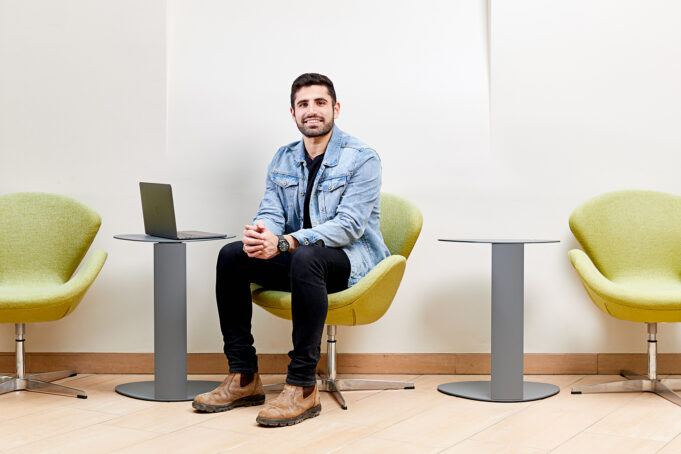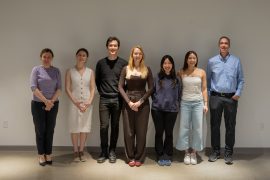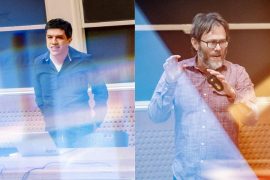New major joins computation, cognition

When Doron Hazan ’21 was drafted into the Israeli Defense Forces (IDF) after high school, he had the opportunity to join the army’s intelligence unit. It was the obvious choice for the self-described “math and physics nerd” from Kiryat Shmona, a small town in Israel’s Hula Valley just south of the Lebanese border. But Hazan was not one to make obvious choices.
“All of my life I’ve been interested in human behavior,” says Hazan, a junior who is enrolled in one of MIT’s newest majors: computation and cognition, or Course 6-9. Launched in the fall of 2019, Course 6-9 is a joint curriculum offered by the Department of Electrical Engineering and Computer Science (EECS) and the Department of Brain and Cognitive Sciences (BCS). So far, 43 students have declared 6-9, and the departments expect the new major to eventually draw as many as 100 students each year.
“I could have done my military service surrounded by people similar to me,” Hazan recalls. “And serving in intelligence would have looked good on my resume. But I was more interested in learning about people and why they behave the way they do. So, I chose to join an infantry unit, where some of my fellow soldiers didn’t even know whether I had passed my high school matriculation exams.”
The new major seemed custom-made for Hazan. He’d followed a somewhat novel path to MIT — almost three years of service in the IDF, followed by two years of work and travel that took him to over a dozen countries in South America, Europe, and the Middle East. “There aren’t many people from Kiryat Shmona who even think about coming to MIT,” says Hazan, who first set foot on campus — and in the United States — a few days before the start of his first year at MIT in 2017. “When I told my mother I’d been accepted, she didn’t know what MIT was.”
Hazan had long known what MIT was. But during his first two years, he wasn’t entirely certain of his place. “I was taking computer science courses in EECS,” he recalls. “But I didn’t think I wanted to become a software engineer. And I was taking neuroscience courses in BCS. But I didn’t think I wanted to go into research. I don’t know if I could have articulated this at the time, but I was looking for a different path, a path that could help me start to address the big questions about life that have always intrigued me.”
With guidance from his advisor Michale Fee, the Glen V. and Phyllis F. Dorflinger Professor of Brain and Cognitive Sciences, Hazan has begun charting a new path through MIT in the new major. That path includes studies in psychology, statistics, engineering, programming, and neuroscience. Hazan’s goal, and the goal of faculty and students involved in Course 6-9, is to work toward a broader knowledge of the interactions between human and artificial intelligence, to understand neural circuits, and to design and build new interfaces between neurons and artificial neural hardware.
“I do feel that this major is somewhat of an experiment,” says Hazan. “But that’s one of the strengths of the program. And of MIT in general. It’s super flexible.”
While Course 6-9 was a natural choice for Hazan, it is one he has had to explain. Several people even tried to discourage him from signing on. “They warned me that if I end up competing with a computer science major after graduation for a job in software, that the computer science major will get that job,” he says. “And that may even be true. But I’m not interested in learning how to be the best software engineer I can possibly be. I’m interested in knowing as many things as I possibly can.”
This article originally appeared in the Spring 2020 issue of MIT Spectrum magazine.


